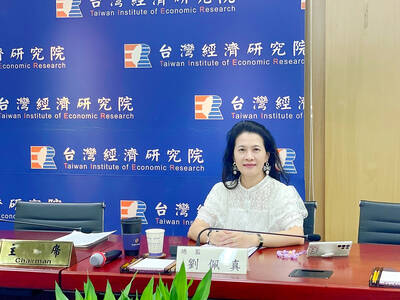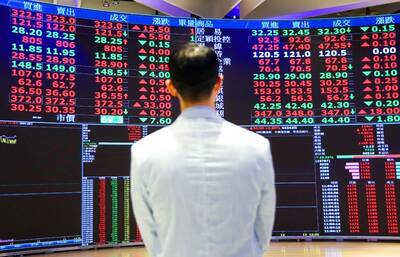Indian Oil Corp, India’s second-biggest refiner, and its state-run rivals are spending 235 billion rupees (US$5 billion) to produce cleaner fuels and meet stricter emissions guidelines.
Indian Oil allocated 115 billion rupees to upgrade its plants, director of Refineries Basavaraj Ningappa Bankapur said in an interview in New Delhi on Monday. Bharat Petroleum Corp and Hindustan Petroleum Corp, the second and third-biggest state refiners, are spending 50 billion rupees and 70 billion rupees respectively, company officials said yesterday.
New emissions standards for gasoline and diesel to be introduced on April 1 will make it compulsory for refiners to sell cleaner-burning fuels. India, the world’s second-fastest growing major economy, aims to cut emissions as it joins other nations in climate-change negotiations in Copenhagen.
“Introducing cleaner fuels will be an absolutely critical step for India to help limit its future emissions,” said Shebonti Ray Dadwal, a research fellow on energy security at the Institute for Defence Studies & Analyses in New Delhi. “The government will likely implement the new standards stringently in order to help meet the new targets it announced for Copenhagen.”
India offered to voluntarily reduce the amount of carbon emissions per unit of gross domestic product after similar pledges from the US and China.
Asia’s third-biggest energy consumer can reduce its emission intensity by as much as 25 percent from 2005 to 2020 through forestry measures and by becoming more energy-efficient, Environment Minister Jairam Ramesh said on Dec. 3.
New Delhi-based Indian Oil may start producing low-sulfur gasoline and diesel at its 240,000 barrel-a-day refinery at Panipat in the northern state of Haryana later this month. It will then do the same at the 160,000 barrel-a-day facility at Mathura in Uttar Pradesh next month, Bankapur said.
“We will be ready to start producing clean fuels by the target date,” he said. “We still have three months to go.”
Indian Oil has gained 51 percent in Mumbai this year, lagging behind the 78 percent increase in the Bombay Stock Exchange’s Sensitive Index. The stock declined 1.2 percent to 320.60 rupees at 10:02am compared with a 0.4 percent gain in the main index. Bharat Petroleum fell 0.7 percent and Hindustan Petroleum dropped 0.8 percent.
From April, it will be compulsory for refiners in India to sell fuels that adhere to Bharat Stage III and IV emission standards, akin to the EU’s Euro III and IV requirements.
The Euro IV standard specifies a maximum of 50 parts per million of sulfur in gasoline and diesel, which will be sold in 11 cities including New Delhi and Mumbai from April 1, according to the UN Environment Program Web site. Fuels with a maximum of 350 parts per million of sulfur will be sold in the rest of the country.
Bharat Petroleum disclosed its spending plans in an e-mailed statement. Hindustan Petroleum’s budget for producing cleaner fuels was confirmed by B. Mukherjee, its director of finance.
The companies didn’t say when they would complete their spending program.

IN THE AIR: While most companies said they were committed to North American operations, some added that production and costs would depend on the outcome of a US trade probe Leading local contract electronics makers Wistron Corp (緯創), Quanta Computer Inc (廣達), Inventec Corp (英業達) and Compal Electronics Inc (仁寶) are to maintain their North American expansion plans, despite Washington’s 20 percent tariff on Taiwanese goods. Wistron said it has long maintained a presence in the US, while distributing production across Taiwan, North America, Southeast Asia and Europe. The company is in talks with customers to align capacity with their site preferences, a company official told the Taipei Times by telephone on Friday. The company is still in talks with clients over who would bear the tariff costs, with the outcome pending further

A proposed 100 percent tariff on chip imports announced by US President Donald Trump could shift more of Taiwan’s semiconductor production overseas, a Taiwan Institute of Economic Research (TIER) researcher said yesterday. Trump’s tariff policy will accelerate the global semiconductor industry’s pace to establish roots in the US, leading to higher supply chain costs and ultimately raising prices of consumer electronics and creating uncertainty for future market demand, Arisa Liu (劉佩真) at the institute’s Taiwan Industry Economics Database said in a telephone interview. Trump’s move signals his intention to "restore the glory of the US semiconductor industry," Liu noted, saying that

NEGOTIATIONS: Semiconductors play an outsized role in Taiwan’s industrial and economic development and are a major driver of the Taiwan-US trade imbalance With US President Donald Trump threatening to impose tariffs on semiconductors, Taiwan is expected to face a significant challenge, as information and communications technology (ICT) products account for more than 70 percent of its exports to the US, Chung-Hua Institution for Economic Research (CIER, 中華經濟研究院) president Lien Hsien-ming (連賢明) said on Friday. Compared with other countries, semiconductors play a disproportionately large role in Taiwan’s industrial and economic development, Lien said. As the sixth-largest contributor to the US trade deficit, Taiwan recorded a US$73.9 billion trade surplus with the US last year — up from US$47.8 billion in 2023 — driven by strong

STILL UNCLEAR: Several aspects of the policy still need to be clarified, such as whether the exemptions would expand to related products, PwC Taiwan warned The TAIEX surged yesterday, led by gains in Taiwan Semiconductor Manufacturing Co (TSMC, 台積電), after US President Donald Trump announced a sweeping 100 percent tariff on imported semiconductors — while exempting companies operating or building plants in the US, which includes TSMC. The benchmark index jumped 556.41 points, or 2.37 percent, to close at 24,003.77, breaching the 24,000-point level and hitting its highest close this year, Taiwan Stock Exchange (TWSE) data showed. TSMC rose NT$55, or 4.89 percent, to close at a record NT$1,180, as the company is already investing heavily in a multibillion-dollar plant in Arizona that led investors to assume